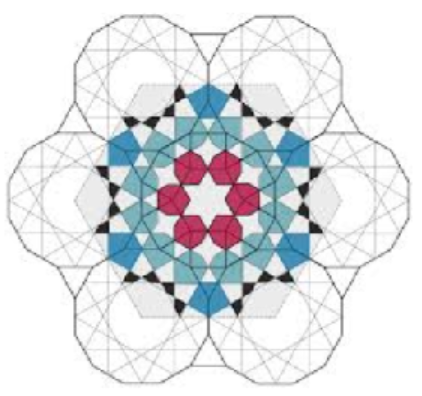Activity 1.1. Properties of Triangles.
Materials: You will need paper and pencil, scissors, a ruler and compass, and two plastic straws.
Prepare: Cut the straw into pieces of lengths 2 inches, 3 inches, and 6 inches. Use the ruler to draw a large triangle, and cut it out.
-
What do we know about the sides of a triangle?
- Can you make a triangle with sides of length 2 inches, 3 inches, and 6 inches?
- Use the pieces of length 2 inches and 3 inches to form two sides of a triangle. What happens to the length of the third side as you increase the angle between the first two sides?
- What is the longest that the third side could be? What is the smallest?
- Two sides of a triangle are 6 centimeters and 8 centimeters long. What are the possible lengths of the third side?
- Two sides of a triangle are \(p\) units and \(q\) units long. What are the possible lengths of the third side?
-
What do we know about the angles of a triangle?
- Use a protractor to measure the three angles of the paper triangle in degrees. Now add up the three angles. What is their sum?
- Tear off the three corners of the triangle. Place them side-by-side with their vertices (tips) at the same point. What do you find?
- How are your answers to parts (1) and (2) related?
-
How are the sides and angles of a triangle related?
- A standard way to label a triangle is to call the angles \(A,~B,\) and \(C\text{.}\) The side opposite angle \(A\) is called \(a\text{,}\) the side opposite angle \(B\) is called \(b\text{,}\) and the side opposite angle \(C\) is called \(c\text{.}\) Sketch a triangle and label it with standard notation.
- Using a ruler, carefully draw a triangle and label it with standard notation so that \(a \gt b \gt c\text{.}\) Now use a protractor to measure the angles and list them in order from largest to smallest. What do you observe?
- Using a ruler, carefully draw another triangle and label it with standard notation so that \(A \gt B \gt C\text{.}\) Now use a ruler to measure the sides and list them in order from largest to smallest. What do you observe?
-
What do we know about right triangles?
- The side opposite the \(90\degree\) angle in a right triangle is called the hypotenuse. Why is the hypotenuse always the longest side of a right triangle?
- The Pythagorean theorem states that:The "if" part of the theorem is called the hypothesis, and the "then" part is called the conclusion. The converse of a theorem is the new statement you obtain when you interchange the hypothesis and the conclusion. Write the converse of the Pythagorean theorem.IF:\(a\text{,}\) \(b\text{,}\) and \(c\) are the sides of a right triangle, and \(c\) is the hypotenuseTHEN: \(\qquad\)
\(a^2+b^2=c^2\) - The converse of the Pythagorean theorem is also true. Use the converse to decide whether each of the following triangles is a right triangle. Support your conclusions with calculations.
- \(a = 9\text{,}\) \(~ b = 16\text{,}\) \(~ c = 25\)
- \(a = 12\text{,}\) \(~ b = 16\text{,}\) \(~ c = 20\)
- \(a = \sqrt{8}\text{,}\) \(~ b = \sqrt{5}\text{,}\) \(~ c = \sqrt{13}\)
- \(a = \dfrac{\sqrt{3}}{2}\text{,}\) \(~ b = \dfrac{1}{2}\text{,}\) \(~ c = 1\)






